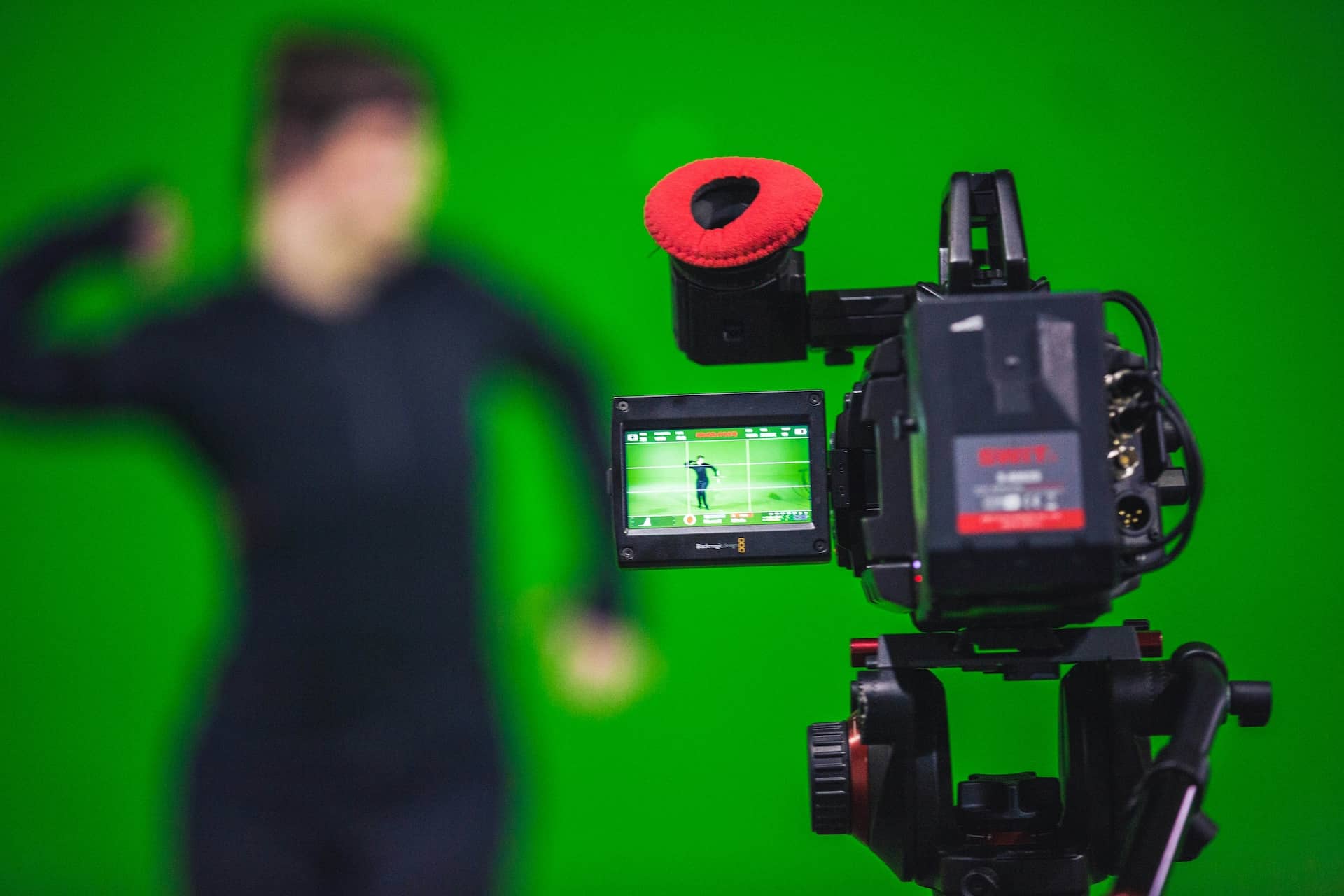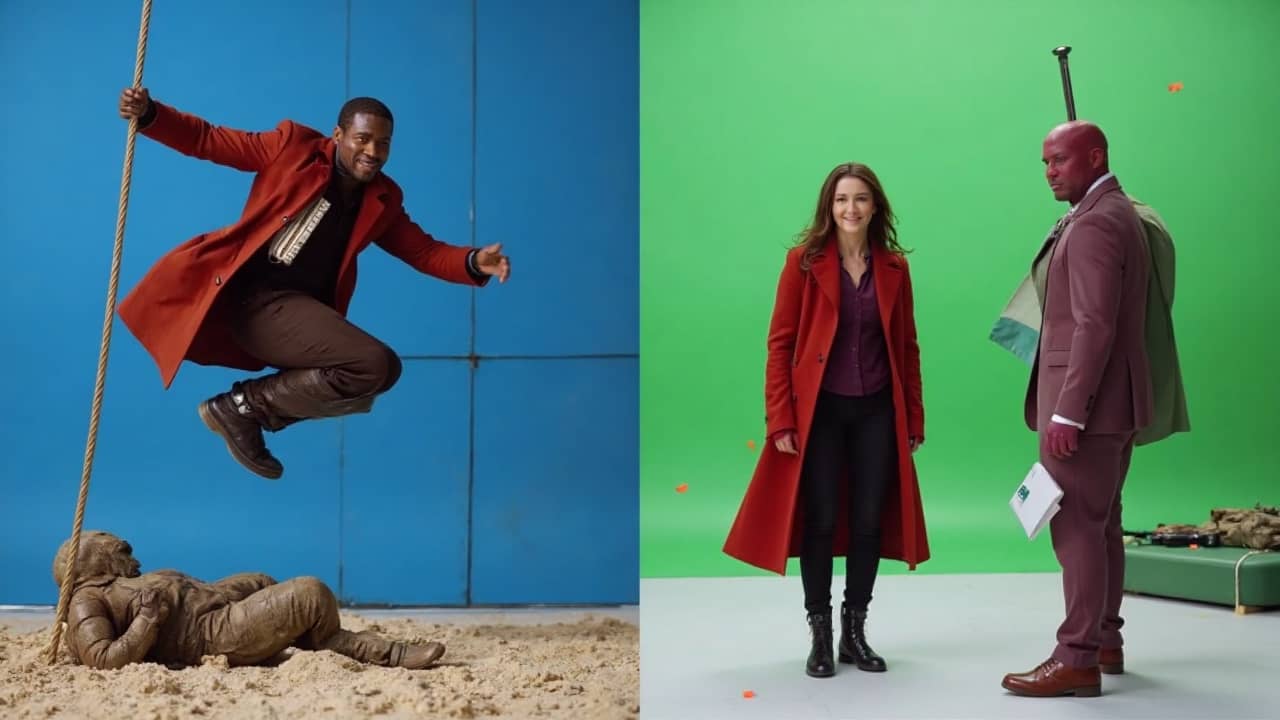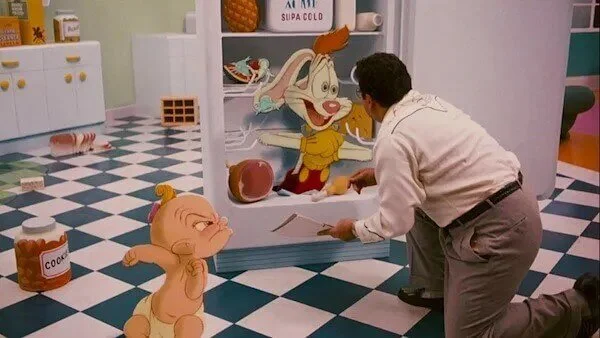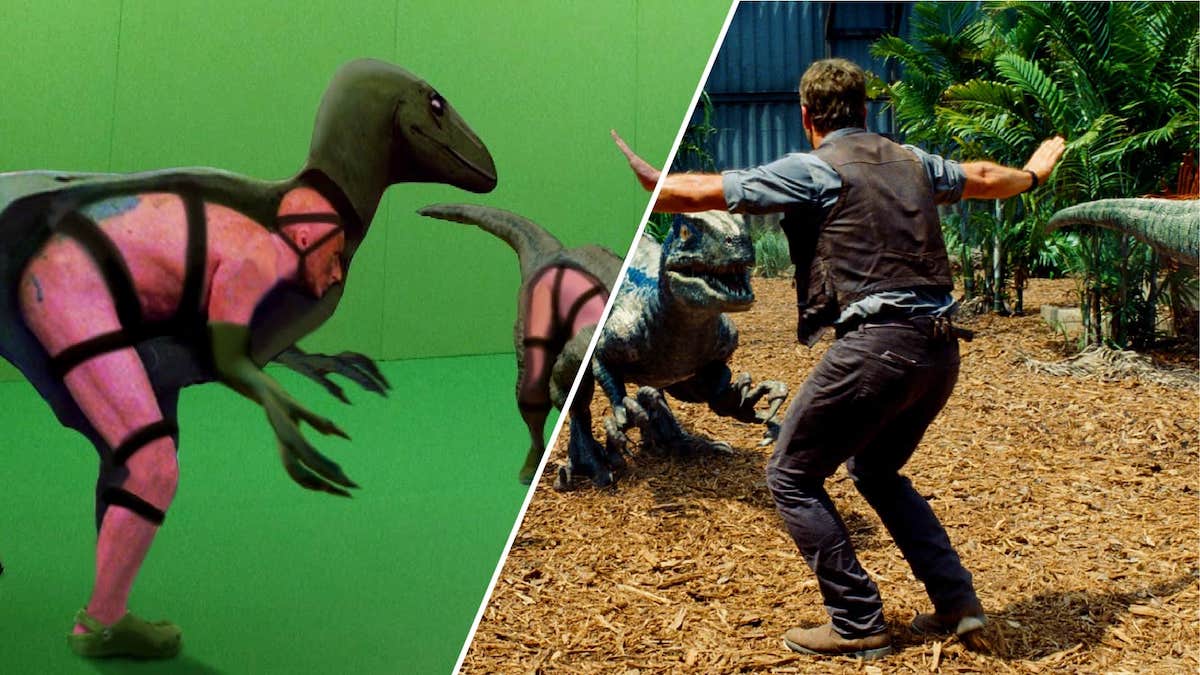Ever watch a sci-fi movie and wonder how they filmed it? Are there secret movie studios on the Moon? Mars? Westeros? Unfortunately not, the answer is far less gratifying. Instead of Mars, it was probably filmed in a warehouse. However, luckily for us, chroma keying is cheaper and a lot more practical than a trip to the Moon. So cheap you might be able to use it on your next shoot! But what is a green screen, how do they work, and what are the various ways they can be used? Let’s get into it.
What is a Green Screen
First, let’s define green screen
Special effects and computer graphics (CGI) are added to countless Hollywood films each year. A green screen is a neon-green screen placed in the background of a shot. Like so:

What is a Green Screen
As we’ll explain later, the screen doesn’t have to be green (and it hasn’t always been). Don’t be fooled by its simplicity, this little screen packs a big punch.
Green Screen Video
What is a green screen?
A green screen is a large green backdrop placed in the background of a shot to allow for digital effects later. In Post-Production, the special effects department will edit the background from green to… anything they want with CGI (computer-generated imagery) or background footage called "plates." The screen can take up the entire background or just a portion of it, depending on what needs to be replaced.
How Does a Green Screen Work?
The process of chroma keying or compositing involves layering two images together.
- The subject in front of the green screen.
- The special effects or CGI put onto the green screen.
Video VFX
What is a green screen used for?
Green screens are most commonly associated with superhero/sci-fi movies. But the applications are truly endless. In this video, we can what a film set these days actually looks like — covered in green.
Before and After VFX Examples
But chroma keying is not limited to the spectacular, it has much more practical uses. Newsrooms and the weatherman/weatherwoman are often filmed in front of green.

Green Screen Examples
More and more productions seem to use chroma keying. Whether it be vloggers, photographers, the video game industry, or your Grandma on Zoom, everyone is learning how to use green screen. We’ve come a long way in green screen technology, but how long has it been around?
Technology Origins
When was green screen invented?
When used today, chroma keying technology and special effects can feel seamless, but that wasn’t always the case.
The first uses came in 1898 with George Albert Smith, using a black cloth to make objects “disappear.”
Perhaps the most well-known early use came during The Great Train Robbery (1903). Here, they painted train windows black, allowing for the addition of passing scenery later.
The following video details how compositing worked in The Great Train Robbery and other iconic examples.
A History of Chroma Keying and Compositing
The early examples were often subtle, but historically significant. Other landmark moments in green screen history are:
- 1918. Frank Williams creates a traveling matte technique. At this point they still used black, but it was one of the first chroma keying video effects.
- 1933. The Invisible Man utilizes the technique to make a man seem invisible.
The Invisible Man (1933)
- 1940. The Thief of Bagdad uses a blue screen and wins the Oscar for best special effects.
- 1970s . Keying software starts to be used in films like The Empire Strikes Back (1980).
- 1988. Who Framed Roger Rabbit wins Oscar for best visual effects.

Who Framed Roger Rabbit
So, after decades of evolution, chroma keying has become more than just a novelty to be an integral element in video and filmmaking. There have been milestones along the way that have pushed this type of visual effect but few have done more so than The Matrix (1999).
VFX in The Matrix still holds up
Why Are Green Screens Green
The battle: green screen vs blue screen
So by now, we know what is a green screen, but why green? Well, as explained earlier, it wasn’t always that way. At first, it was black, then blue, then yellow, now green (mostly).
Tips on working with chroma keying
The industry settled on green because, for compositing or chroma keying to work, the background color needs to be different. Different from skin tones, and different from wardrobe. It turns out that unless you go to the University of Oregon, most people don’t wear a lot of neon green… but people do wear blue.
Aside from wardrobe, blue and green do each offer some technical advantages:
- Green: It’s the default, easier for digital cameras, requires less lighting, performs better in the day time, but can struggle with color spill. Especially with blond hair.
- Blue: Cleaner edges and less color spill. Better at night but requires more lighting.
This is just a summary why green or blue would work in most chroma keying scenarios. For a full breakdown, read more on the differences between green vs blue screen.
Chroma Keying Today
The future of green screen
We’ve learned about the past, and we’ve come a long way in recent years, so what about the future? Where are we going next? Are we gonna stick with chroma keying or is there a viable alternative?
Well, shows like The Mandalorian have opted for a technique of LED walls instead. Watch this behind the scenes clip on just how advanced their system was and the benefits that makes it ideal.
Mandalorian’s LED Walls
These LED walls act like your LED TV, putting up graphics on the background of a set. So instead of shooting and choreographing in front of a blank colored screen, you do so in front of an LED background.
This can be helpful for the actors, directors, cinematographers, and for color spill. The short term cost is high, but long term, it can save money on locations, set building, and in Post-Production.
Other companies have started experimenting with in-camera VFX and holographic images. The creators will tell you green screen will soon be a thing of the past, and that the future is better, cheaper, and more efficient. And maybe they’re right, but for now, green is still king.
If things change, we’ll be sure to let you know.
UP NEXT
How to make a green screen
Now that you know what green screen is and how they work, now it’s time to make one! No matter your budget, this technology is no easier than ever — from green poster board you can buy at a craft store to constructing a permanent studio setup. Up next is a step-by-step guide on the hacks, tips and tricks to making your own DIY screen.
Up Next: DIY VFX →
Share your vision with elegant shot lists and storyboards.
Create robust and customizable shot lists. Upload images to make storyboards and slideshows.
